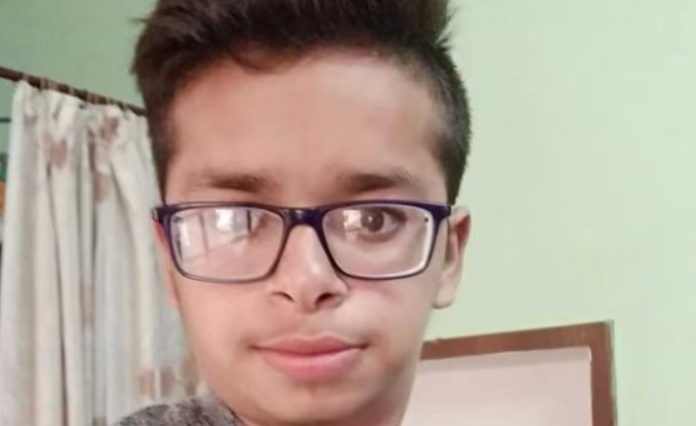In a shocking and tragic incident that has sent ripples of grief and concern throughout Punjab, a 17-year-old boy was allegedly killed by his friend over an argument related to an iPhone 11. The gruesome murder, which took place in a small town, has left the victim’s family shattered and raised questions about the rising violence among the youth, especially over material possessions.
According to police reports, the victim, identified as Amanpreet Singh, was a high school student known for his amicable nature and promising future. Amanpreet and the accused, who was also 17 years old and a close friend, had been classmates for several years. They spent a lot of time together, shared common interests, and had often been seen hanging out in their neighborhood. However, what seemed like an unbreakable friendship turned into a devastating tragedy over a dispute about a mobile phone.
The investigation revealed that Amanpreet had recently purchased an iPhone 11, a relatively expensive smartphone that was in high demand. His new acquisition reportedly became a point of contention between him and his friend, who had expressed a strong desire to own a similar phone but could not afford one. Sources claim that the accused had asked Amanpreet to lend him the phone on multiple occasions, but Amanpreet had declined. This refusal allegedly created tension between the two friends, eventually culminating in a fatal altercation.
On the fateful day of the incident, Amanpreet and the accused had arranged to meet at an isolated spot near their school. Unbeknownst to Amanpreet, his friend had sinister intentions. Witnesses reported hearing heated arguments between the two before the situation escalated. In a fit of rage, the accused allegedly attacked Amanpreet with a sharp object, inflicting severe injuries on his neck and chest. Amanpreet succumbed to his injuries on the spot, leaving the community in shock and disbelief.
As the horrifying news spread, the police were alerted, and an investigation was launched immediately. The accused initially tried to flee the scene but was later apprehended by law enforcement officers. During interrogation, he confessed to the crime, citing jealousy and anger as the primary motives behind his actions. He stated that he had been feeling inferior due to Amanpreet’s possession of the iPhone 11 and had acted impulsively in the heat of the moment.

Amanpreet’s family was devastated upon hearing the news. His father, a hardworking farmer, and his mother, a homemaker, were inconsolable as they struggled to comprehend the loss of their beloved son. Friends and relatives gathered at their home, mourning the untimely death of a young boy who had his entire life ahead of him. Many in the community condemned the senseless act of violence and called for stricter measures to prevent such incidents in the future.
The local police issued a statement, emphasizing the need for addressing growing aggression and material obsession among teenagers. Officers pointed out that this case was a stark reminder of how social and economic pressures, coupled with a lack of emotional regulation, could lead to disastrous consequences. Authorities urged parents, teachers, and community leaders to engage with young people, educate them about the value of human life over material possessions, and encourage open discussions about handling conflicts in a non-violent manner.
Amanpreet’s school also held a memorial service in his honor, where teachers and classmates shared fond memories of him. His principal expressed deep sorrow over the tragedy and highlighted the importance of instilling ethical values in students to prevent such violent confrontations. The school administration also announced plans to introduce conflict resolution programs and workshops on emotional intelligence to help students navigate interpersonal relationships more effectively.
As the legal proceedings move forward, the accused now faces serious charges, including murder. Given that he is a minor, the juvenile justice system will determine the appropriate course of action. However, the severity of the crime has led to discussions about whether he should be tried as an adult. Legal experts suggest that cases involving extreme violence often require a reconsideration of juvenile laws, especially when the nature of the crime demonstrates deliberate intent.
The incident has sparked broader conversations about the impact of consumer culture on young minds. Many psychologists and social commentators argue that today’s youth are under immense societal pressure to own high-end gadgets and luxury items, often equating material possessions with self-worth. The rapid rise of social media, where flaunting expensive belongings has become a trend, is believed to contribute to such unhealthy comparisons and, in extreme cases, violent consequences.
Community leaders and activists have also urged the government to implement educational reforms that promote values like empathy, non-violence, and emotional intelligence. They stress the need for awareness campaigns that help young people develop healthy coping mechanisms for handling envy, frustration, and rejection. Some have even proposed the establishment of youth counseling centers where adolescents can receive guidance on managing peer pressure and emotional distress.
Amanpreet’s tragic death has left a lasting impact on his community, serving as a grim reminder of the consequences of unchecked emotions and material obsession. His family, still reeling from the loss, has vowed to spread awareness about the importance of valuing human relationships over material wealth. In memory of their son, they are considering launching initiatives aimed at educating young people about the dangers of consumer-driven competition and violence.
While the accused awaits his fate in the juvenile justice system, the town continues to mourn the loss of a promising young life. The local administration has assured Amanpreet’s family of full support and is considering policy measures to prevent similar incidents in the future. Schools in the area are also reviewing their student welfare programs, looking for ways to integrate lessons on conflict resolution and emotional well-being.
As Punjab grapples with the shocking reality of this case, many hope that this tragedy will serve as a wake-up call. It is a harsh but necessary reminder that beyond economic and technological advancements, there must be a focus on instilling compassion, understanding, and ethical values in the next generation. Only through collective efforts can society prevent such heartbreaking incidents and ensure that young people grow up in an environment that prioritizes life, respect, and harmony over material gain.


